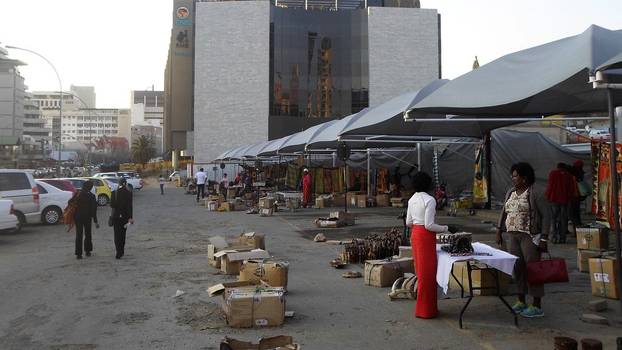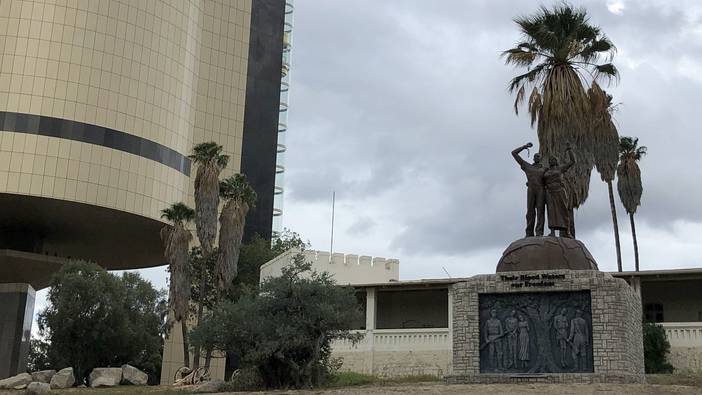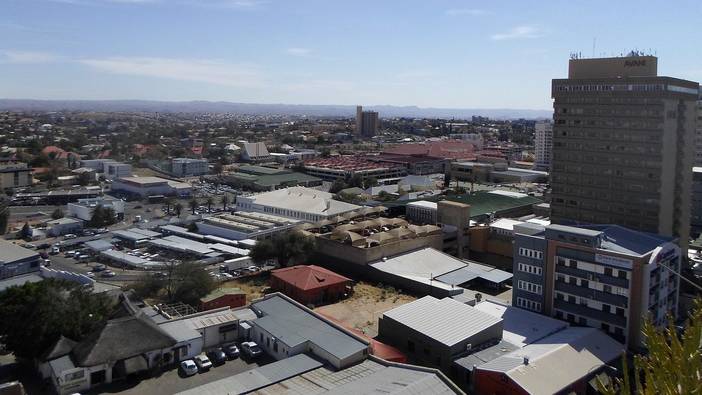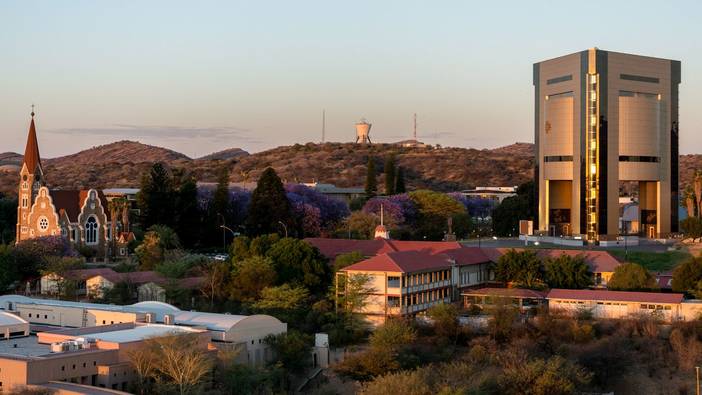
During the pre-independence, colonial apartheid era, Namibia was often cited as the world’s second-most unequal society, following its then-colonial ruler, South Africa. Socio-economic inequalities rooted in the political economy of apartheid colonialism shaped the character of the Namibian society. Thirty years into independence, what has changed? Not much! Namibia is still the world’s second-most unequal country. Land (mal)distribution is still a particularly important factor contributing to this status, but one with a deep and painful history.
Land (mal)distribution along racial lines is a result of the process of dispossession, which began in 1883 when Adolf Lüderitz, a German trader, acquired the first tracts of land from Nama chief Joseph Fredericks. The methods used to acquire the land can justifiably be described as cheating through fraudulent agreements. The first transaction involved an area covering five geographical miles, acquired for 100 British pounds and 200 rifles. This was followed by the sale of a coastal strip starting from the Orange River about 222 kilometres southward and extending about twenty geographical miles inland, acquired for the price of 500 pounds and 60 rifles. These transactions together with many other cases were direct bargains between German traders and local traditional leaders. They remained until 1898, when the German administration introduced “native reserves” for black people, thereby instituting the formal policy of land alienation through private purchases of land from local people and confiscation by violent means.
Romie Vonkie Nghitevelekwa lectures in the subject areas of sociology of development, sociology of the environment, rural sociology, and gender and environment in the Department of Sociology and Anthropology at the University of Namibia. She is the author of the forthcoming book titled Securing Land Rights in Communal Areas: An Analysis of Communal Land Reform in North-Central Namibia and its Implications for People’s Lived Realities and Social Equity.
When the South African administration took over what is now Namibia in 1915, 11,490 hectares of agricultural land belonged to German settlers. The process of land dispossession and alienation did not end with the German occupation, but continued throughout South African administration. In fact, South Africa used Namibia for the specific purpose of resettling their own “poor whites” as part of its settlement policy. By 1926, for example, 880 farms had been allocated to 1,106 white South African settlers comprising an area of 7.5 million hectares. By 1962, 39.8 million hectares of land were already in the hands of whites. Some tracts of particularly unwanted land were returned to the black population as a result of recommendations from the Odendaal Commission—with which it has been argued that the distribution of land along racial lines was complete.
At independence in 1990, 36.2 million hectares of land belonged to whites while 33.5 million hectares were used by black African populations. The disheartening inequality here was that the land in possession of the whites supported only about 4,200 households, or a mere less than 5 percent of the population, while 150,000 households or 70 percent of the population eked out a living on the remaining 33.5 million hectares. It was this (mal)distribution that requires redistribution –hence the calls for redistributive justice. Addressing socio-economic inequalities and/or dismantling unjust socio-economic structures had been part of SWAPO’s policy during the liberation struggle. Some have come to describe this as rather “socialist” rhetoric. Independence Day on 21 March 1990 represented the dawn of a new era—not only an era of self-determination and freedom from the yoke of colonialism, but a new era in which Namibians were meant to be emancipated from distributive inequalities and injustices. In his inaugural speech marking the occasion of Independence Day, the Founding President of the Republic of Namibia highlighted that achieving independence imposed a heavy responsibility to not only defend the hard-won liberty, but also to set and maintain high standards of equality and justice. These were indeed fitting sentiments considering the legacies of colonialism and apartheid exploitation in the forms of blatant inequalities and injustices that the newly independent nation was confronted with and which needed urgent redress.
One of the first critical dialogues as an effort to build a newly independent nation revolved around how to attend to redistributive claims, which “seek a more just distribution of resources and wealth”. Indeed, there was strong determination by the government, civil society, and the Namibian population to change the status quo of existing inequalities and injustices in land distribution. This is evidenced by the fact that the first ever conference in Namibia after independence, held in 1991, was on the land question and adopted 24 Consensus Resolutions. Eleven of these Consensus Resolutions were strategic approaches to bringing about redistributive justice, and covered issues of injustices in land distribution, prohibiting foreign ownership of land, reducing farm sizes and numbers, expropriating land owned by absentee landlords, expropriating underutilized land, and improving the rights of farm workers among others. Other resolutions concerned tenure reforms in communal areas. Communal areas are parallel to the freehold areas, where land is owned privately through title deeds. The majority of the Namibian population lives in communal areas and are allocated land by the traditional authorities. These areas have gone through what Wolfgang Werner calls different administrative incarnations—from native reserves to homelands and then communal land.
The land conference and Consensus Resolutions emerging from it built a foundation for the ensuing land reform programme, which was put into effect by the enactment of the Agricultural (Commercial) Land Reform Act, No. 6 of 1995. This was done soon after independence, reflecting that bringing about redistributive justice in land distribution was a key priority for Namibia. Other key policies, legal, and institutional instruments put in place included the Agricultural Amendment Act enacted in 1991 and amended into the Agricultural Bank of Namibia Act in 2003, the introduction of the Affirmative Action Loan Scheme in 1992, and the passing of the National Resettlement Policy in 2001. All of these policies, legal, and institutional instruments are commendable government efforts to redistribute land to previously disadvantaged Namibians.
On 21 March 2020 Namibia celebrates 30 years of independence. With three decades gone by, we must reflect on the promises we made to ourselves in 1990. We must reflect on our path towards delivering justice in land distribution or redistributive justice. The critical question now is: how is our land reform faring? Critical as it may be, to the dismay of many Namibians these reflective questions do not deliver satisfaction. The status quo in land distribution has not moved an inch. Currently, 48 percent of land in Namibia is classified as agricultural commercial land, 17 percent is state land, and 35 percent is communal land. Agricultural commercial land is targeted for redistribution. Key questions include what has happened with regards to general land ownership, ownership of land by nationality, and ownership of land between previously advantaged versus disadvantaged groups—in other words, ownership by race, sex, and class. Half of the agricultural commercial land is still owned by individuals: 250 farms totalling about 1.2 million hectares of land are owned by non-Namibians, and worse of all, 70 percent of agricultural commercial land is still in the hands of the white settler descendant population, referred to in official speech as “previously advantaged groups”.
To add fire to the frustrations of many Namibians—especially those grazing their livestock in the corridors between agricultural commercial farms, those who are repeatedly expelled because the only land they could use has been turned into townlands, or the many landless Namibians who genuinely need land—land is still being sold to foreign nationals, who are generally the highest bidders. Many worry that the land acquired for redistribution has largely benefited the political elite, hence the public regularly calls for the release of resettlement beneficiaries. Given these dynamics, Namibians are no longer only concerned about racial inequalities in land distribution. Class inequalities have also come into play, not to mention gender inequalities. Of the 4,922 national individuals owning agricultural commercial land, men own 77 percent, while women own 23 percent. Thus, calls for redistributive justice are as concerned about race and class as they are about gender, and more recently also about generational claims. Nonetheless, the overall conclusion is that redistributive land reform has not delivered the justice called for—instead, the status quo remains.
While we are at it, land redistribution is no longer only about agricultural commercial land. Unequal distribution of land has started to haunt communal areas. Over the years, many—especially the elite or the wealthy members of society—have fenced-off and individualized large tracts of communal land through a process called “land grabbing”. This comes at the expense of other communal land users. The old “frontiers” where land users in the communal areas have long taken their cattle for grazing have been individualized. Now a few individuals hold more than 5,000 hectares of communal land, while others own three or less hectares and others have no access to land at all. The inequality is clearly visible, and Namibia has witnessed social frictions over this. What has happened in western Kavango regions over grazing and land grabbing is still fresh. These frictions involved farmers from the north-central regions (mainly from Oshikoto and Ohangwena) who had fenced-off land and grazed their cattle in Kavango since 1992. In 2004, the Uukwangali Traditional Authority ordered the Aawambo farmers to leave the area, a case that went to court and was ruled in favour of the traditional authority, resulting in an eviction order in 2005. To this day, a fence separates Kavango West Region and the north-central regions. In addition, the land question has also become an urban issue. Many Namibians—even the celebrated middle class, let alone the low and ultra-low-income earners in urban areas—cannot afford land and housing. The land question represents a crisis 30 years after independence. As we turn a new page and enter a new decade, Namibians still have hope for redistributive justice, but current inequalities are still of great proportions. We must bring together all emancipative forces to ensure that hope for redistributive justice does not remain just hope.


